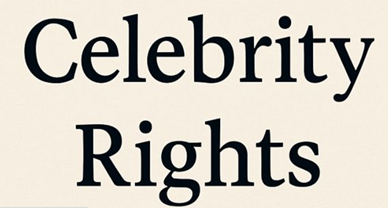Copyright (Amendment) Rules, 2019 – An Amendment Much Needed?
The Ministry of Commerce and Industry from the Department of Promotion of Industry and Internal trade (DPIIT), by a notification on 30th May 2019 published a draft of certain rules to amend The Copyright Rules, 2013 which are known as the principal Rules. The alleged motive of such amendments is to bring copyright law into line with other relevant laws and to ensure that it is in step with the technological advances of the current digital age. Following are the highlights of the draft amendments:
- ADIOS “COPYRIGHT BOARD” :
The first major change brought in the 2019 Amendment Rule is the substitution of “The Copyright Board” mentioned in Chapter 2, Rule 3 of the Copyright Rules, 2013 by “The Appellate Board”. The amendment states that the formation of such a new board shall be as per the provisions of The Trademarks Act, 1999, and further entails the qualifications required for being a “Technical Member” of the Board.[1]
-“through electronic means” has been inserted before “by registered post” to encompass e-communication within the ambit of the Act.
-“each mode of broadcast” has substituted “by way of the radio broadcast, television broadcast”/ “ radio and television broadcasting”
-“In its official Gazette” has been substituted by “on its website”
The addition and substitution of the above-mentioned words have been done to expand the scope of statutory licenses to include all types of broadcasting services. Such an act of widening the horizon of the copyright framework to bring all forms of broadcasters under its ambit will improve accountability and transparency thus, making this amendment a positive one.
- “BROADCAST” ISSUE:
Rules 29 to 31 deals with Statutory license for the broadcasting of literary and musical works and sound recordings will be amended to include “each mode of broadcast” for the words “radio broadcast or television broadcast. Keeping in consideration the recent battle between Tips and Wynk[1] & Spotify and WMR, it wouldn’t be wrong to state that the current amendments in the discussion are being made not only to keep up with the tech-savvy world but also to broaden the ambit of the word “Broadcast” in reference to Section 31-D of The Copyright Act, 1957. It would be pertinent to note that the court clearly held that “BROADCAST” in respect to Section 31-D of The Act includes only Radio and Television broadcasting as the section talks specifically about the “rates of royalties for radio broadcasting” and “television broadcasting”
Justice Kathawalla also agreed that the internet and digital technologies such as streaming and downloads were prevalent when the Copyright Act was amended in 2012 and that Section 31D was framed keeping this in mind so it was never intended to include “internet broadcasting” organizations.[2] Thus, it appears that the Draft Rules have attempted to remedy the basis of the decision in Tips v. Wynk [3] by expressly including all modes of broadcasting within the statutory licensing regime. Internet streaming/online streaming is becoming the lifeline of the entertainment world and further, the economy. Such inclusion is important and inevitable in an era where survival without the internet is impossible
- COPYRIGHT SOCIETY:
The thrust of the Draft Amendments seems to introduce transparency in the functioning of copyright societies:
- TARIFF SCHEMES: The amendments suggest the substitution of the words “consult the user groups” by the following guidelines for fixing the tariff for copyright societies (RULE 56, Sub Rule-4):
“and may also consider: (a) cross-sectional tariff comparisons; (b) economic research; (c) the nature and scope of the use of the work; (d) the commercial value of the rights in use; (e) the benefits to licensees;”
DIPP has proposed in the amendments that when fixing its tariff the copyright society may consider (RULE 57, Sub Rule – 5): “(a) class of works; (b) nature of the use of work; (c) modes of communication to the public. (d) prevailing standards of royalties with regard to such works; (f) commercial value of the rights in use; (g) benefits to licensees; (h) such other matters as may be considered relevant by the Board.”
The amendment gives out in detail certain criteria’s on which the tariff schemes of the copyright societies should be based, thus expanding the ambit of RULE 56 And 57 as provided in Copyright Rules, 2013. It gives a better base for coming up with an adequate tariff scheme.
- ROYALTY TO AUTHORS:
A Sub-Rule is proposed to be added to Rule 58 of The Copyright Act, 1957 stating that there should be a separate account in the copyright societies to keep in store the amount payable as royalty to an author or owner who in the current situation could not be found or located. In case the royalty due to the author and other owners remains undistributed at the end of the period of three years from the end of the financial year in which collection of the royalty occurred, the copyright society shall refund such amount to the licensee within a period of three months from the end of such financial year.[1]
- ANNUAL TRANSPARENCY REPORT:
A new Article 65A has been proposed requiring copyright companies to publish an “annual report on transparency” within six months of the end of each financial year. Such report shall include, but not be limited to, a report on the activities of the exercise, information on the denial of a license, a description of the legal and administrative structure of the copyright society, and financial information on the rights revenue for each category of rights-managed any use, financial information on royalties of authors and other owners, information on relations with foreign companies or organizations, etc.
- In the principal rules, after clause (l) of sub-rule (1) of Rule 66[1], the following new clause shall be inserted, namely–
“(m) the facility to search from the database of works forming part of the repertoire of the copyright society.
(n) the annual transparency report as approved by the General Body.
(o) the details of the undistributed royalties on account of the work belonging to authors and other owners who could not be identified or located.”[2]
The facility to search
- APPLICATION FEE:
The amendment in Rule 83 states that the fee is payable under the Act and the rules as specified in the second schedule and no application shall be entertained if not accompanied by the prescribed fee. The mode of payment has been updated to be paid electronically or by demand draft or Banker’s cheque in favor of the Registrar of Copyrights drawn on a scheduled bank at New Delhi
- MISCELLANEOUS:
Further, the notification suggests changes in the Forms with respect to “The Copyright Board” being replaced by “The Appellate Board” and expanding the scope by changing “goods” to “goods or services” in Serial Number 9 & 10 of the Schedule II.
To conclude, the Amendment rules, 2019 have suggested changes viable to keep the Act updated with the tech-savvy culture. The use of electronic means of communication has been envisaged in the recommended amendments along with provisions seeking smooth and transparent functioning of the copyright societies. The term “broadcast” aims to now include every mode of broadcast and will no more limited to radio and television broadcasting. Thus, it would be fine to say that the suggested Amendments are well framed and thought to achieve their objective.
Author: Vidushi Trehan, LL.M. student from Symbiosis Law School, Pune, Intern at IP and Legal Filings, and can be reached at support@ipandlegalfilings.com.


